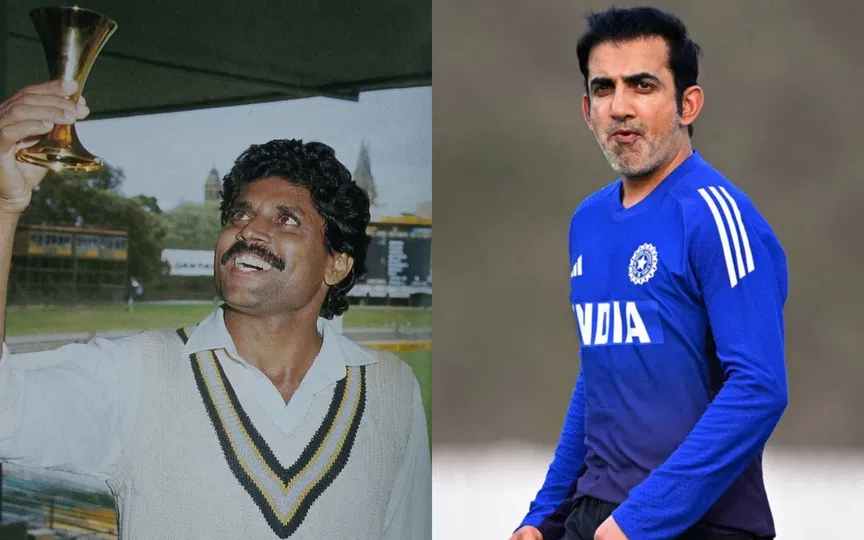.jpg?type=hq) Josh Hazlewood (left) and Cheteshwar Pujara (right) - (Source: AFP)
Josh Hazlewood (left) and Cheteshwar Pujara (right) - (Source: AFP)
Test cricket, the traditional format of the game or a battlefield which is termed as ‘original texture’ of cricket, has always been a subject of ‘pride’ or ‘ego’ for those who find themselves in this battle. In the game, which has mostly been called “batters’ game”, the bowlers, especially the pace bowlers have established themselves as a major stakeholder and game-changer in Test cricket.
Amidst a huge number of ‘drawn’ games in Test history owing to the ‘brilliance of the batters’, there has been a famous notion in cricket that, “taking 20 wickets in a Test match is something that always lets you win the game.”
Meanwhile, some of the legendary bowlers of their era and the captains fully lived up to this notion and delivered the most hostile spells in the entire history of the game. These spells have been the worst nightmares for the batters who were on the receiving end as those memories still give them horrific flashbacks.
Given that, here’s an analysis to understand the psychology of surviving hostile spells in the longest format, a mental battle where even the brilliant techniques fall short.
The moments when bowlers question batters’ existence
There come the moments in a Test match when the pacers go eye-to-eye with the batters, questioning their existence with the hostile deliveries and sometimes, an entire spell of unforgettable, unplayable, and deadly pace-bowling.
These kinds of spells have been seen on a couple of instances in the 148-year long history of the game, and more often in the famous rivalries like the Ashes between England and Australia and the Border-Gavaskar Trophy between Australia and India.
The body language
The initiation point when bowlers rope the first seed of fear in the batters’ mind is a shift in the body language. It all starts when bowlers start giving the aggressive stares, making short follow-throughs, throwing bouncers, and start intimidating the batter verbally to make him feel burdened by the mental pressure. This makes the batter doubt his reflexes and delay the response.
These tricks and tactics by the bowlers happen to be the first stage where a ‘fear of survival’ is instilled in the batters’ mind. What this does in the favour of the bowling team is to put the batting side on a defensive mode instead of trying to hit big shots.
The slip cordon theory
After making the first attack with a battle-like body language, the second weapon bowlers throw on the batters is the quiet and unmoving fielders in the nearest radius of the batter. It gradually puts the batter in a cage, which further starts making him feel psychologically suffocated.
Sometimes, this psychological suffocation provokes the batter to make some unnecessary moves, resulting in his dismissal or an injury with mental defeat in this battle.
Sledging: One of the most lethal weapons
When a batter is almost completely on the back foot, the bowlers unveil one of their most lethal weapons and that is sledging. After noticing a batter struggling in a hostile spell, the bowlers start throwing the comments designed strategically to break the confidence of the batter.
It further continues to put the one on the receiving end in self-doubt, forcing him to go ahead to execute poor and rushed decision making.
Mental warfare of field placement: Last nail in the coffin
Apart from creating a pressure with the close-in fielders and the ‘slip cordon theory’, the bowlers also start a mental warfare against the batters with an overall field placement throughout the ground. This aggressive placing of the fielders force the batters to fear the consequences instead of believing in their technique.
Throwing the bouncers with an aggressive field placement is something that leaves the batters helpless and even they forget to execute any of their best techniques in this pressure. This last weapon from the bowlers sometimes turns out to be the last nail in the coffin for the batters, leaving them injured or a batting collapse of the entire team.
The survival technique for batters: Incidents and anecdotes
There have been a lot of incidents and anecdotes in the history of Test cricket, which testifies the intensity of the hostile bowling spells. These anecdotes carry a lot of aspects, be it the survival technique for the batters or the moments when teams collapsed drastically, surrendering to such spells.
This mindset of deadly or aggressive bowling finds its roots almost 92-93 years back in 1932-33, when England’s Harold Larwood introduced his ‘bodyline’ tactics to the cricketing world in the Ashes series against Australia. His short-pitched bowling, targeted at the body of the batters rather than the stumps was a counter attempt to neutralize the ‘Bradman brilliance’ for Australia.
The controversy went to the extent that this series is still known as the ‘bodyline series’ that left the Aussie batters injured, followed by impacting the relations between England and Australia. In the Ashes 1932-33, Larwood was nothing less than a ‘nightmare’ for the Aussie batters in their own backyard.
The rise of Gavaskar amidst 'Caribbean Catastrophe' for batters
Fast forward to the era of 70s to 90s, the baton of hostile bowling left by Larwood was picked by the deadly Caribbean quartet of Malcolm Marshall, Joel Garner, Andy Roberts, and Michael Holding. This quartet was synonymous with fear for the opponent batters in the 80s and 90s.
But, then came one of the all-time Indian batting greats, Sunil Gavaskar who taught the world how to not only survive but dismantle the dangerous bowling spells in Tests, and that too in the era of no helmets and no advanced protective gears.
Sunil Gavaskar against West Indies pacers
| Matches | Innings | Runs | Average |
| 27 | 42 | 2,749 | 65.45 |
Gavaskar’s success against the West Indies pacers in their pomp was testimony to the fact that the deadly spells can only be defied by the mental toughness, observational approach, and composed demeanour without getting burdened by the fear of the consequences. A batter can analyze the situation and carry himself calmly through a spell which seems to be unplayable.
Besides Gavaskar’s excellence guiding the batters to operate through an unbelievable and hostile spell, there had also been the moments when batting teams collapsed miserably after failing to stand against such intensified bowling. However, Gavaskar scored a memorable century, scoring 121 runs off 128 balls against the unplayable attack, including the likes of Holding and Marshall in Delhi in 1983.
In recent times, the battle between India’s Cheteshwar Pujara, Hanuma Vihari and the Aussie pace attack of Josh Hazlewood, Mitchell Starc, and Pat Cummins in Border Gavaskar Trophy 2020-21 also showed how to convert bowlers’ warfare mindset back into the normal cricketing psyche. The way Pujara-Vihari duo faced the Aussie bowlers on their body in Sydney and Brisbane could be a good case study for the young-generation batters to learn.
The spells when batting side felt the heat
| Bowler | Opponent | Year | Outcome |
| Michael Holding | India | 1976 | Holding forced Bedi to retire innings early due to injuries |
| Curtly Ambrose | Australia | 1993 | Ambrose claimed 7 wickets
for just 1 run in a span of just 32
balls |
| Devon Malcolm | South Africa | 1994 | Malcolm registered figures of 9/57 taking England to win. |
| Allan Donald | England | 1998 | England batting
collapsed against
Donald's brutal
'fast-bowling'. |
| Mitchell Johnson | England | 2013 | Johnson won 'player of the series' for picking 37 wickets in the iconic Ashes series. |
Conclusion - The battle of last man standing
After a thorough analysis of the psychology and mindset concerning the hostile and deadly spells in Test cricket, it can be concluded that there is no specific strategy which can be executed to face such kind of fierce bowling.
One can only win this mental warfare with the mindset of ‘last man standing’ and staying strong there in the middle to face the heat and make it change into the “ash of bowling side’s ego”.



.jpg?type=mq)


